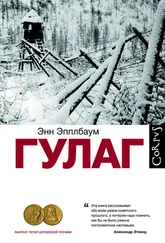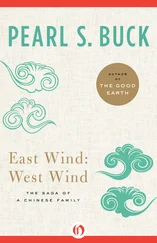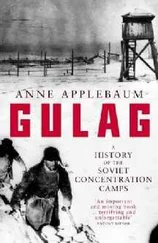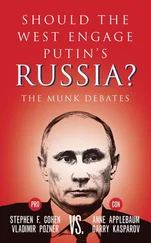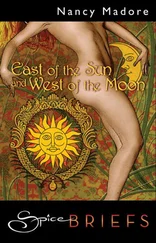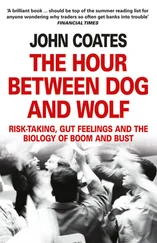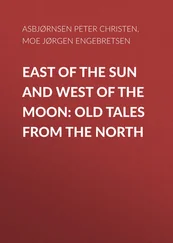Энн Эпплбаум - Between east and west
Здесь есть возможность читать онлайн «Энн Эпплбаум - Between east and west» весь текст электронной книги совершенно бесплатно (целиком полную версию без сокращений). В некоторых случаях можно слушать аудио, скачать через торрент в формате fb2 и присутствует краткое содержание. Жанр: Публицистика, на английском языке. Описание произведения, (предисловие) а так же отзывы посетителей доступны на портале библиотеки ЛибКат.
- Название:Between east and west
- Автор:
- Жанр:
- Год:неизвестен
- ISBN:нет данных
- Рейтинг книги:5 / 5. Голосов: 1
-
Избранное:Добавить в избранное
- Отзывы:
-
Ваша оценка:
- 100
- 1
- 2
- 3
- 4
- 5
Between east and west: краткое содержание, описание и аннотация
Предлагаем к чтению аннотацию, описание, краткое содержание или предисловие (зависит от того, что написал сам автор книги «Between east and west»). Если вы не нашли необходимую информацию о книге — напишите в комментариях, мы постараемся отыскать её.
Between east and west — читать онлайн бесплатно полную книгу (весь текст) целиком
Ниже представлен текст книги, разбитый по страницам. Система сохранения места последней прочитанной страницы, позволяет с удобством читать онлайн бесплатно книгу «Between east and west», без необходимости каждый раз заново искать на чём Вы остановились. Поставьте закладку, и сможете в любой момент перейти на страницу, на которой закончили чтение.
Интервал:
Закладка:
Because border disputes and national incompatibilities had provided Hitler with an excuse to start the war, they remained in the minds of the Allied leaders as it drew to a close. Rationality and drawing borders by treaty hadn't worked, they told themselves; territorial wars were no longer acceptable. Better, neater solutions had to be found; the messy parts of Eastern Europe had to be made clean. When they first met in Tehran in 1943, Roosevelt, Churchill, Stalin began to discuss the problem, sometimes obliquely. There was a precedent which they all knew about: after the First World War, the Turks had transferred more than a million Greeks out of Turkish territory. They had packed them on trains, that is, together with their cows and chickens and life's savings, and sent them away, clearing the land for ethnic Turkish settlement. «While this is a harsh procedure,» noted Harry Hopkins, one of Roosevelt's advisors, «it is the only way to maintain peace.»
Quietly, Churchill agreed. As for Stalin, he had already tried the same methods on Russia's ethnic Germans, on the Tartars, and on the Karelian Finns, among others, and he came up with the plan: he simply proposed to keep those territories he had acquired in 1939 and 1940 — the Baltic states and eastern Poland, as well as the Bukovina and Bessarabian provinces of Romania — and to deport anyone who no longer belonged. Although those were lands acquired by invasion and collusion — according to the secret Molotov-Ribbentrop pact between the Soviet Union and Nazi Germany — America and Britain agreed to let Stalin have what he wanted.
At Potsdam, in 1945, Stalin claimed Konigsberg and the northern half of East Prussia too: almost no Germans, he lied, were left in East Prussia anyway. All had fled. Russia needed a warm water port on the Baltic, and, after the long war, the Soviet people deserved to own a little bit of Germany, as it would make them feel like they had won a true victory. The other Allied leaders agreed. So the Baltic coast became his too — although millions of Germans were still there, although Konigsberg Bay does, in fact, freeze in winter — and the Soviet Union had pushed itself as far West as possible.
By 1945, the job of re-ordering the borderland peoples was already half completed. Hitler had already murdered most of the borderland Jews. Occupying Soviet officers had already sent over a million Polish officials, land-owners, and soldiers to Siberia and Central Asia, along with over half a million West Ukrainians and half a million Balts. After the war, the deportations continued, grew, and developed into the largest mass movement of people in recorded history. The Poles remaining in southern Lithuania, Western Belarus and Ukraine — several million of them — were sent to the German lands in Silesia, Pomerania and southern East Prussia. Germans from those territories were then evacuated to western Germany. Balts and West Ukrainians and Moldavians who objected to Soviet rule were moved to Siberia. Germans and Romanians were removed from the Bukovina, freedom-fighters were shipped out of Ruthenia, the eastern province of Czechoslovakia.
During the years that followed, Russian became the language of administration in those territories, and Russian Orthodoxy became the only, barely tolerated, religion. Russian settlers were moved in, wherever population levels had dropped, to take the place of those who had been deported. Soviet historians wrote Poles and Germans out of history books, as if they had never been there at all, and embarked on a program of renaming cities: Konigsberg became Kaliningrad, Wilno became Vilnius, the Polish-Ukrainian city of Lvov became L'viv. Within the cities, streets changed their names, and so did people. Romanians in Moldova became Moldavians, learned to write in Cyrillic, and the Latin alphabet was banned.
The idea was simple, beautifully clear. Gradually, all of the subtle dialects which were once spoken in the borderlands, all of the national variations and differences in costume and taste, all would be submerged in an onslaught of Russification. Difference would be destroyed: Stalin planned for the borderlands to disappear into Soviet Russia. Call it ethnic cleansing, to use a phrase coined later in another context, on a massive scale — or call it cultural genocide. Either way it was very successful. The West turned its face away, and did not notice while the crescent of land stretching from Konigsberg on the Baltic to Moldova and Odessa on the Black Sea was altered beyond recognition.
The region had been conquered before, but the Soviet empire cast a deeper shadow than any of its predecessors. Whole nations were forgotten; within a few decade, the West no longer remembered that anything other than «Russia» lay beyond the Polish border. Kiev was thought to be a Russian city, Lithuania was considered a Russian province; it was as if the many and various peoples of the region had simply dissolved into the colourless Pripet Marshes, the vast, muddy Belarusian swamp. The national identity of these lands could no longer be clearly defined, and in London and Paris, the history of the borderlands was consigned to dusty bookshops, the languages of the borderlands were banished to small magazines, the borderland emigres retreated into small clubs and churches. After forty years, even the memory of the many-coloured, multi-ethnic borderlands had faded away.
It was at the end of a hot summer, just at the end of what later came to be called the Soviet «years of stagnation», when I first saw the borderlands. For a night and half a day, the train I had boarded in Leningrad had been heading south across Russia and Ukraine, stopping from time to time in small towns, each one with a down-at-heel railway station, a grimy platform, and a kiosk where one could buy sweet soft drinks and dry biscuits. I remember feeling happy, and very free: I was going out, going home, going away from Leningrad, leaving behind the rules and restrictions which had governed the two months I had spent as a student. But I also remember the frustration that one always felt travelling in the Soviet Union. At that time, foreigners were consigned to certain cities, special roads, restricted train journeys. Sipping tea from a glass, I stared out the window, wanting to know more about the flat, unkempt countryside which lay just beyond the train tracks. To me it was forbidden territory, as inaccessible as the moon.
Then, quite unexpectedly, my wish was granted. The train pulled into a much larger station. We had arrived in the city of L'viv, in southwestern Ukraine, and a surprise announcement came over the loudspeakers. Repairs had to be made, the train would stop for five hours. Passengers were allowed to disembark. It was as if someone had told me that it was possible to walk into a picture frame: I jumped out of the carriage and ran across the train station, into the forbidden landscape.
A few hours later, I was standing in a cemetery. The rain which the summer heat had threatened for so long had started to fall, and it was growing dark. All around me, laid haphazardly one beside the other, were a thousand monuments to L'viv's confused history. I pushed the weeds away from the face of one ponderous tombstone and saw the symbol K & K — it meant Kaiserlich und Königlich, imperial and royal, the symbol of Austro-Hungary — carved beneath the epitaph. Nearby, white marble graves inscribed in a lovely Polish script leaned against another, as if in penance for some forgotten crime. Some of the tombs were Ukrainian, marked by the Greek Catholic cross; these often featured a small portrait of the deceased as well. There were also newer, Soviet graves, topped by a red star, and old stones too worn to be read. So many nations, one buried on top of the other, so many different people, jostling one another for space — the cemetery, it seemed to me then, contained the secret history which the dull Soviet landscape and boring regulations had concealed. I returned to the train, and woke up the next morning in Hungary, gazing out the window at a field of yellow sunflowers, still holding the passport which the border police had demanded, scrutinised, and wordlessly returned the night before.
Читать дальшеИнтервал:
Закладка:
Похожие книги на «Between east and west»
Представляем Вашему вниманию похожие книги на «Between east and west» списком для выбора. Мы отобрали схожую по названию и смыслу литературу в надежде предоставить читателям больше вариантов отыскать новые, интересные, ещё непрочитанные произведения.
Обсуждение, отзывы о книге «Between east and west» и просто собственные мнения читателей. Оставьте ваши комментарии, напишите, что Вы думаете о произведении, его смысле или главных героях. Укажите что конкретно понравилось, а что нет, и почему Вы так считаете.


